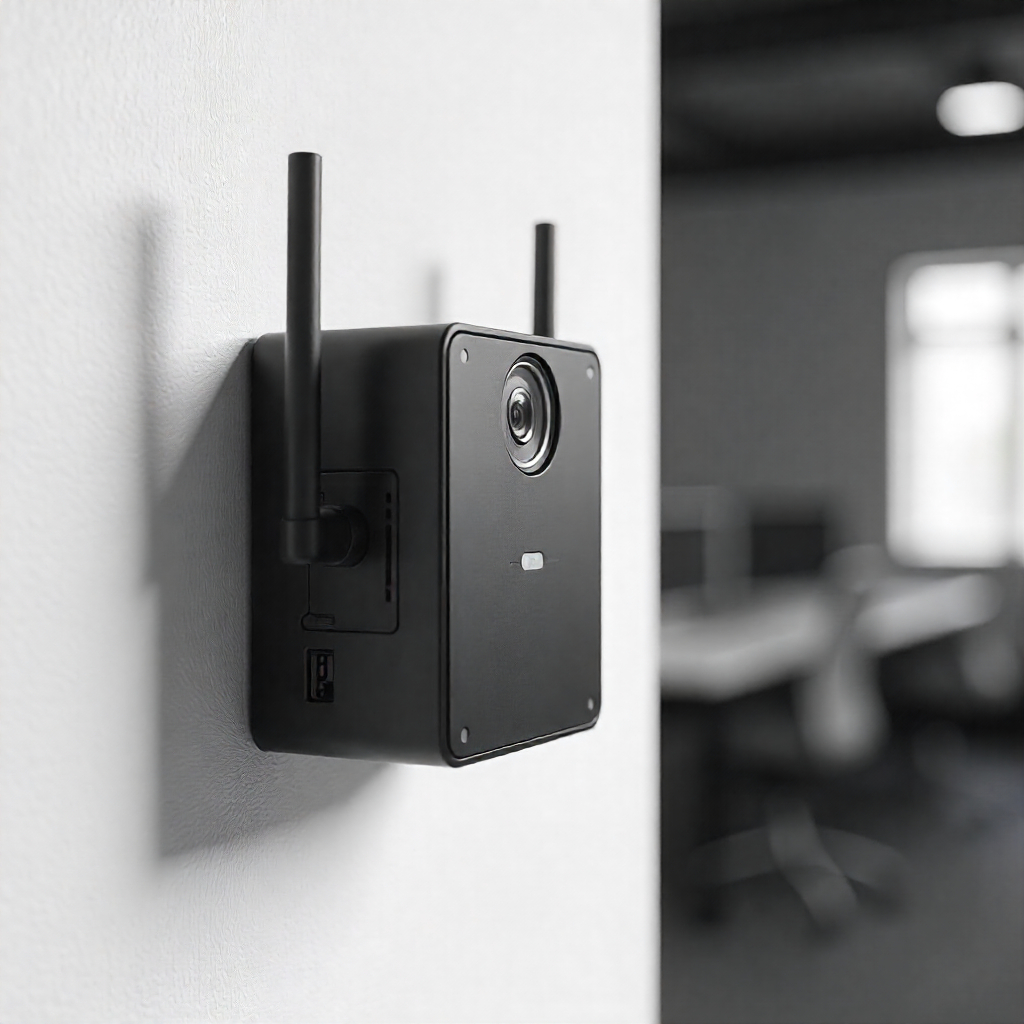The uncomfortable truth about how your mere presence can now be tracked through walls, without devices, using technology that’s already in your home.

Stop. Look Around Your Room Right Now.
Every WiFi signal bouncing through your space isn’t just connecting your devices. It’s painting an invisible picture of your body. It’s creating a unique “fingerprint” that can now identify and track you anywhere you go. No phone, no wearable device, no camera. Just you, moving through space, unknowingly broadcasting your biometric signature to anyone who knows how to listen.
While you’ve been worried about facial recognition and phone tracking, researchers in Italy just demonstrated something far more unsettling. A system called ‘WhoFi’ that can identify individuals with up to 95.5% accuracy based purely on how their bodies disrupt WiFi signals.
This isn’t theoretical anymore. It’s here.
The Technology That Turns Bodies Into Broadcasts
What Exactly Is WiFi “Fingerprinting”?
Unlike traditional tracking that requires you to carry a device, WiFi fingerprinting analyzes the way your body interferes with WiFi signal propagation. Think of it this way: when radio waves encounter your body, they bounce, reflect, and scatter in patterns as unique as your actual fingerprints.
Researchers from La Sapienza University of Rome developed “WhoFi,” which uses the way a person’s body distorts WiFi signals to re-identify them across different locations. The system captures something called Channel State Information (CSI). Essentially, it’s data about how electromagnetic transmissions change as they travel through an environment.
The Technical Reality Behind the Surveillance
Here’s what makes this particularly powerful:
Deep Neural Networks: The researchers used a transformer-based architecture, a type of model popular in advanced AI applications to analyze these signal changes. The AI learns to recognize the subtle ways different body types, sizes, and movement patterns affect wireless signals.
Persistent Tracking: This identifier can re-identify a person in other locations most of the time when a WiFi signal can be measured. Observers could therefore track a person as they pass through signals sent by different WiFi networks.
Infrastructure Advantage: Unlike visual systems, WiFi signals can operate regardless of lighting conditions, pass through walls, and avoid capturing identifiable images, making them appear deceptively privacy-friendly while actually enabling more invasive tracking.
The Industry Push Behind WiFi Sensing
This isn’t happening in a vacuum. The IEEE 802.11bf Task Group was formed to develop an amendment to the IEEE 802.11 standard that will enhance its ability to support WiFi sensing, with the final standard expected by September 2024.
Following the approval of the IEEE 802.11bf specification in 2020, the WiFi Alliance began promoting WiFi Sensing, positioning WiFi as something more than a data transit mechanism. The industry is actively transforming your home router into a sensing device.
Learning: The Uncomfortable Questions This Raises
Question 1: Who’s Actually Watching?
While WhoFi was an academic exercise, and there are currently no commercial or government plans for it, the implications stretch far beyond laboratories:
Surveillance:** Law enforcement could scan an entire apartment complex without ever stepping inside, or authoritarian regimes could quietly monitor citizens from across the street.
- Corporate Tracking: Retail stores could track your movement patterns through their spaces, building detailed profiles of shopping behavior without your knowledge.
- Domestic Threats: Stalkers, hackers, or even nosy neighbors might one day cobble together DIY “x-ray” rigs, capable of peering into your most private spaces.
Question 2: How Accurate Is This Technology Really?
WhoFi achieves up to 95.5% accuracy, significantly improving on previous systems like ‘EyeFi’ which achieved 75% accuracy in 2020. But accuracy isn’t the only concern—it’s the invisibility of the tracking that makes it dangerous.
As one expert noted, “95% is only 19 in 20. That’s far from demonstrating ‘unique'”. However, anything metal on your person—change, keys, etc., will affect your “signature”, meaning your trackability changes constantly.
Question 3: What About Privacy Protections?
The privacy landscape around WiFi sensing remains gloomy:
Industry Claims: WiFi sensing technology companies claim “linking a WiFi sensing signal to an identifiable person is at this point science fiction” and that “WiFi sensing cannot pick up contextual information, such as the type of movement”.
Research Reality: Yet scientists claim WiFi signals offer superior surveillance potential compared to cameras because they’re not affected by light conditions, can penetrate walls and other obstacles.
Regulatory Gap: Security and privacy considerations of WiFi-based sensing have not received much attention, with research focused on improving classification accuracy with little regard to security and privacy issues.
Taking Control of Your Digital Body Signature
Understanding Your Vulnerability
Current Exposure: WiFi sensing is already good enough to 100% detect human presence in a home, with some of Verizon’s new Fios routers including a human presence detector powered by Origin Wireless.
Infrastructure Reality: All of the wireless devices in a home like smart plugs, speakers, burglar alarms, and the myriad of other WiFi-enabled devices contribute to making such devices effective.
The QUX® Alternative: Privacy by Design
While the tech industry rushes to turn your body into a broadcast signal, QUX® takes a fundamentally different approach. Our platform operates on privacy-protective principles:
Connection Choice Freedom: QUX® gives you the power to choose how you connect: use WiFi when convenient, or switch to ethernet when you want maximum privacy and performance. Your connection, your choice.
Data Containment: When you choose ethernet with QUX®, your data travels through dedicated cables instead of broadcasting wirelessly through space. No signal scatter means no accidental data exposure to WiFi sensing systems.
Streaming Superiority: Ethernet connections with QUX® deliver more reliable streaming performance.. No dropped connections, no buffering interruptions, no bandwidth sharing with neighboring networks trying to analyze your digital presence.
No Behavioral Tracking: Unlike systems that monitor your physical presence, QUX® doesn’t track your movements or create behavioral profiles whether you’re connected via WiFi or ethernet.
Revolutionary Alternative: While others see surveillance opportunities in every wireless signal, we see empowerment possibilities: Technology that serves you, not systems that track you.
The Bottom Line: Your Digital Body Deserves Privacy
WiFi sensing represents “a new kind of privacy risk, and one for which safeguards are still being developed”. The technology is advancing faster than the protections.
The uncomfortable reality is that your WiFi router can already “see” you moving through your home. The fact that this tech can be built using off-the-shelf parts means that anyone with moderate technical skill could build a similar system.
BUT… Knowledge is your first line of defense. Understanding how your digital body signature works, and how to protect it, puts the power back in your hands.
Unlike the surveillance economy that profits from tracking your every move, the QUX® ecosystem believes in digital freedom that actually protects your privacy.
Your body. Your movement. Your choice.
Ready to reclaim your digital freedom? Discover how QUX® protects what others exploit.

